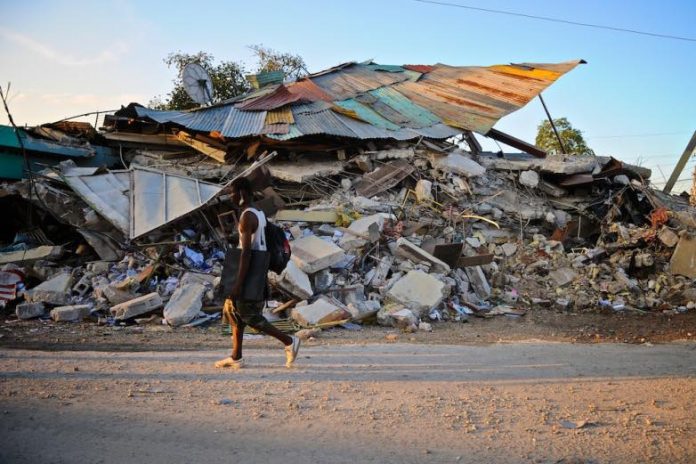Scientists say number of severe quakes is likely to rise strongly next year because of a periodic slowing of the Earth’s rotation.
In a study published in Geophysical Research Letters earlier this year, Roger Bilham of the University of Colorado and Rebecca Bendick of the University of Montana predict that, because of Earth’s slowing rotation, the world will see a significant spike in large earthquakes in 2018.
To make this prediction, Bilham and Bendick studied every earthquake since 1900 that recorded more than 7.0 on the moment magnitude scale. They found that approximately every 32 years, there is an uptick in these large quakes. The only factor that strongly correlates is a slight slowing of the Earth’s rotation in a five-year period before the uptick.
“Of course that seems sort of crazy,” Bendick told Science. But think through it a little and it might not seem so outlandish. The Earth’s rotation is known to go through regular decades-long periods in which it slows down and speeds up. Even seasonal changes, like a strong El Niño, can affect the planet’s rotation.
But to have the kind of effect that would produce more severe earthquakes, we have to look deeper. Starting from its very center, the planet is made of a solid iron and nickel “inner core,” liquid iron and nickel “outer core,” a thick liquid mantle, and finally a thin solid crust. Earthquakes occur on the crust, but the crust floats on the mantle.
Though Bilham and Bendick don’t know for sure, they believe that every so often the Earth’s mantle might stick a little more to the crust. That could change how the liquid outer core flows. And because it’s all metal down there, the change in flow will affect planet’s magnetic field, which would ever so slightly affect the Earth’s rotation and thus change the length of the day by milliseconds. The Earth’s rotation has been slowing down for the past four years.
“The inference is clear,” Bilham told the Guardian. “Next year we should see a significant increase in numbers of severe earthquakes.” Instead of an average of about 15-20 large earthquakes, we might see 25 or 30 in 2018.
Bilham can’t tell with any certainty where these might take place. Many large earthquakes occur in places where they don’t affect human life, but in the wrong spot they can wreak havoc. As Quartz reported previously:
In an ill-prepared country like Haiti, a magnitude 7.0 earthquake in 2010 killed more than 100,000 people. In Japan, with much better buildings, a magnitude 9.0 quake (which releases about 1,000 times more energy than a 7.0) in 2011 killed some 18,000 people.
So, can we predict earthquakes? It’s a question that vexes seismologists, not because it is unreasonable, but because scientists have tried many times and always ended in failure. Even after many advances in seismology, as Richard Luckett of the British Geological Survey puts it, “when an earthquake occurs is essentially a random event.” Rightfully, that hasn’t stopped people from trying.





























